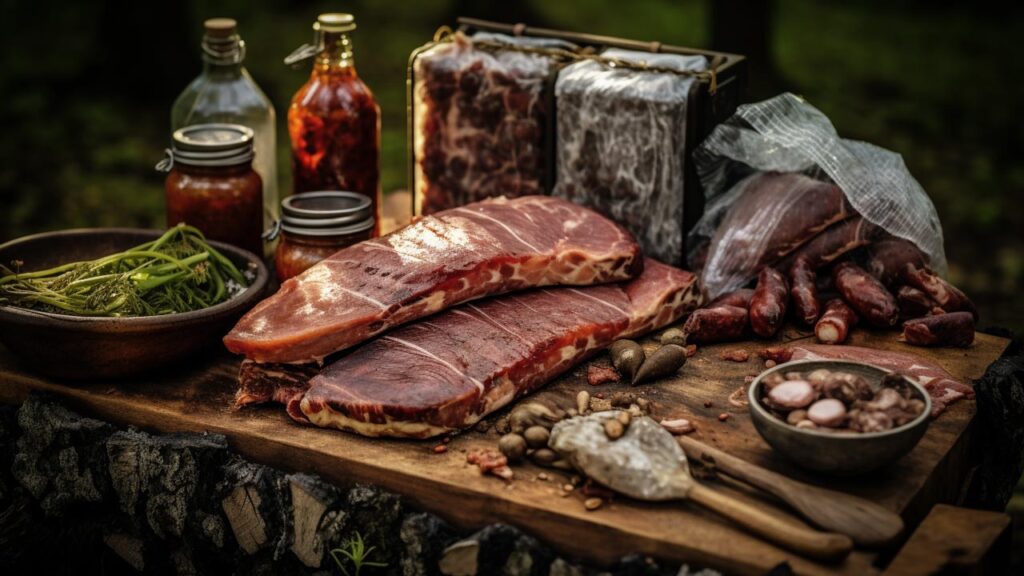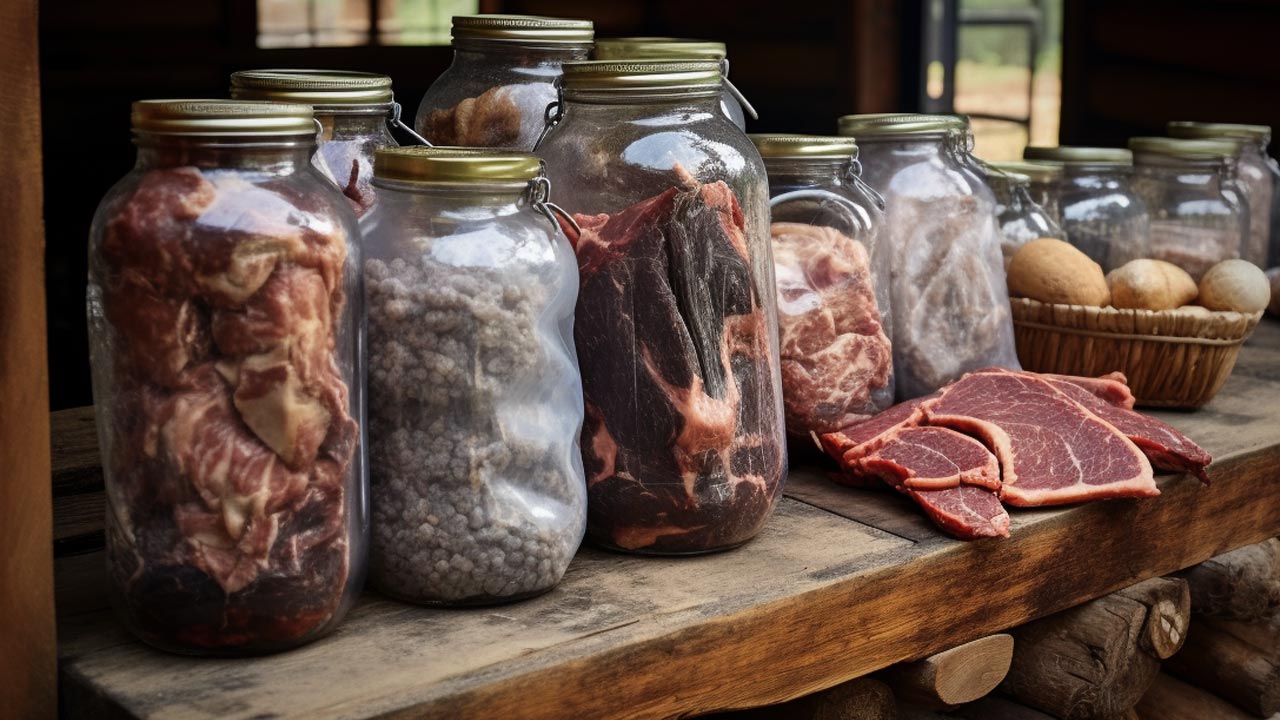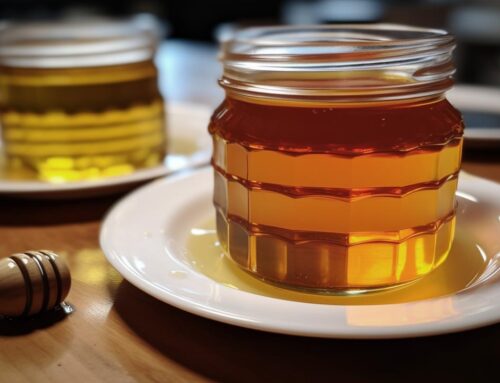Preserving Meat: A Time-Tested Practice for Food Safety and Longevity
Preserving Meat, ever wondered how our ancestors managed without refrigerators? The secret lies in the art of preserving meat, a crucial skill honed over centuries. Today, even with modern conveniences, understanding these methods is not just a nod to tradition but a practical skill for sustainability and emergency preparedness.
Key Takeaways
- Freezing, curing, drying, and smoking are fundamental for extending meat’s shelf life.
- Modern technology complements these age-old techniques, ensuring food safety.
- Each method has its unique benefits and can be adapted to various types of meat.
Table of Contents
- The Science Behind Meat Preservation
- Methods of Meat Preservation
- Traditional Methods in Different Cultures
- Health and Safety Considerations in Meat Preservation
- Integrating Modern Technology in Meat Preservation
- Advanced Preservation Techniques
- The Role of Preservation in Sustainable Living
- Future Trends in Meat Preservation
- Frequently Asked Questions
The Science Behind Meat Preservation
Preserving meat isn’t just about prolonging its edibility. It’s a battle against bacteria and spoilage. By reducing moisture, controlling temperature, and using natural preservatives, these methods create environments where harmful bacteria can’t thrive, keeping your meat safe and delicious for longer.
Methods of Meat Preservation
Freezing Meat
The simplest yet effective way! By storing meat at temperatures below 0°F, bacterial growth halts. Remember, airtight packaging is key to prevent freezer burn and preserve quality. However, even frozen meat doesn’t last forever; it has a shelf life that you should be mindful of.
Salting and Curing Meat
A time-tested method, curing involves using salt (and sometimes sugar) to draw out moisture, creating an environment inhospitable for bacteria. Whether it’s the deliciousness of prosciutto or the simplicity of salt-cured bacon, this method adds flavor while preserving the meat.
Drying/Dehydrating Meat
Transforming meat into jerky through dehydration not only preserves it but also gives it a unique flavor and texture. Thinly sliced and dried, this method extends meat’s usability by several months.
Smoking Meat
Smoking is both a flavoring and preserving method. From cold smoking fish to hot smoking beef, it’s a versatile technique that adds a distinct taste while extending shelf life.
Canning Meat
A method as old as time, canning involves sealing meat in airtight containers and sterilizing them through heat. This method can keep meat good for years, making it an excellent choice for long-term storage.
Other Methods: Brining, Biltong, Using Preservatives
Other notable methods include brining, where meat is soaked in a saltwater solution, and biltong, similar to jerky but with a vinegar treatment. These methods, along with using food preservatives, are also effective in prolonging meat’s shelf life.
More detailed information on off-grid food preservation.
Traditional Methods in Different Cultures
Around the globe, meat preservation is both a necessity and a culinary art. Each culture has refined its methods, adapting to local climates and tastes. For instance, in the Arctic, Inuits traditionally preserve meat by freezing it naturally in the cold environment. In contrast, Mediterranean cultures have perfected drying and curing methods, giving birth to delights like Italian salami and Spanish chorizo. These diverse practices not only ensure food availability but also contribute to the rich tapestry of global cuisines.
Health and Safety Considerations in Meat Preservation
When preserving meat, safety is paramount. Temperature control is crucial; too warm, and you risk bacterial growth; too cold, and the meat’s quality deteriorates. Equally important is hygiene during the preservation process to avoid cross-contamination. Using fresh, high-quality meat and following proper preservation techniques ensures both the safety and the deliciousness of your preserved meats.

Integrating Modern Technology in Meat Preservation
Modern technology has given a new dimension to traditional meat preservation methods. Vacuum sealers enhance the effectiveness of freezing and curing by eliminating air exposure. Digital temperature controls in smokers and dehydrators ensure precise conditions for optimal preservation. Even in canning, pressure canners with safety features have made the process more efficient and safer. These advancements help in achieving consistent results, ensuring that the preserved meat is not only safe to consume but also maintains its flavor and texture.
Advanced Preservation Techniques
While freezing, curing, and smoking are well-known, there are more nuanced methods that offer unique benefits. For instance, preserving meat in lard, an ancient technique, involves curing the meat and then submerging it in lard, creating an oxygen-free environment that prevents spoilage for up to 9 months. Another intriguing method is using ash, specifically from bread ovens, which prolongs the meat’s shelf life after it’s been cured with salt.
Utilizing food preservatives, commonly found in stores, is another approach. These preservatives, often containing citric acid, can extend meat’s freshness, although they are more suitable for short-term preservation. Each of these methods underscores the diversity and innovation in meat preservation, catering to different needs and resources.
The Role of Preservation in Sustainable Living
Meat preservation is more than just a means to extend shelf life; it’s a cornerstone of sustainable living. By preserving meat, we reduce waste, maximize resources, and ensure food security, especially in remote or off-grid living situations. It empowers individuals to be more self-reliant and less dependent on commercial food supply chains. In an era where sustainable practices are increasingly vital, understanding and applying meat preservation techniques is both a practical skill and a step towards a more sustainable future.
Future Trends in Meat Preservation
Looking ahead, the future of meat preservation is likely to be shaped by technological innovation and environmental consciousness. Techniques that reduce energy consumption, minimize chemical use, and optimize preservation effectiveness will be at the forefront. For example, advancements in biopreservation, using natural microorganisms or their derivatives to inhibit spoilage, are promising. Additionally, the exploration of eco-friendly packaging materials that enhance preservation while being biodegradable is gaining traction. These emerging trends not only aim to improve the efficiency of meat preservation but also align it with the broader goals of sustainability and environmental responsibility.






Leave A Comment